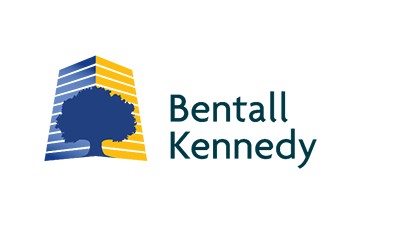The Business Case For Building Sustainably

Developers are building more sustainable buildings, but not just because they think it is the right thing to do.
As it turns out, there are several hidden benefits to sustainable building design. Green initiatives not only encourage sustainable use of energy and other resources, but they also make sense from a business perspective. For a typical office building, sustainability efforts like the implementation of energy-efficient lighting and the use of environmentally friendly building materials can result in expenses reduced by up to 30%, according to the Morgan Stanley Institute for Sustainable Investing.
These savings, coupled with increased tenant demand for sustainable spaces, is driving investors to point their money toward green buildings.
“Sustainable buildings are healthy investments because they produce less waste and consume less energy, which reduces operating expenses,” Bentall Kennedy Senior Vice President of Portfolio Management Mike Keating said. “Many tenants will pay higher rents for sustainable properties and are happier in them, leading to higher retention rates, which directly impacts revenue.”
Keating, who helps oversee a portfolio that is recognized as a global leader in sustainability, said operating expense savings and enhanced revenue make these sustainable buildings 8% to 10% more valuable than other properties.
Tenant preferences drive the value of sustainability. In an effort to attract talent and promote corporate social responsibility, a number of Fortune 500 companies have implemented sustainable initiatives into their business model, and that extends to the offices they occupy.
Financial services firm PNC, for example, has set ambitious goals to reduce its carbon emissions and energy use by 75%, and water use by 50% before 2035. In 2017, the company conducted an audit of over 200 of its buildings and worked with building managers to create energy-efficiency plans. So far, PNC has completed energy-efficient lighting retrofits in 1,300 banks and 36 major buildings, and reduced overall water consumption across all locations by 30%. Other companies have sought out leases at properties already enacting sustainability measures.
“Certain Fortune 500 companies will even go as far as to only consider offices that are sustainable and LEED certified,” Keating said. “This gives sustainable buildings a leg up on the competition.”

Keating and his team recently worked to implement these practices at 101 Greenwich St., an office building in Lower Manhattan. The building had large windows and an architecturally sophisticated exterior, but it lacked the modern systems and infrastructure to support a sustainable environment. The Bentall Kennedy team, along with Cove Property Group, renovated the building with sustainability features targeting LEED Silver designation. They also replaced the central heating and cooling system with separate systems for each floor, enabling tenants to control their individual climates while reducing the energy usage for the full building.
“In New York, you have a lot of people working beyond the hours of 9 to 5, so central plants will typically shut off during earlier or later hours,” Keating said. “If tenants at 101 Greenwich know they are going to be gone for a week, they can put it on energy saver. They can also adjust the temperature up or down based on actual use of space. This leads to greater comfort for tenants and more efficient energy usage while saving our tenants money through reduced operating costs.”
In many cases, investing in these projects also means investing in the communities they help create. Many sustainability efforts are concentrated in dense, urban cores like Washington, D.C., Chicago and New York. By owning, developing and buying sustainable offices in urban locations near mass transit and central business districts, investors are creating a live-work-play trifecta that attracts a talented workforce and helps the community develop economically. As tenants continue to seek out workplaces that promote social consciousness, more landlords and property managers will continue to follow.
“Over [the] next five to 10 years, we will start to see most institutional landlords adopt sustainability as a standard,” Keating said. “Using new technology and big data analytics, the commercial industry is quickly getting smarter about energy usage and tenant habits.”
This feature was produced in collaboration between Bisnow Branded Content and Bentall Kennedy. Bisnow news staff was not involved in the production of this content.

